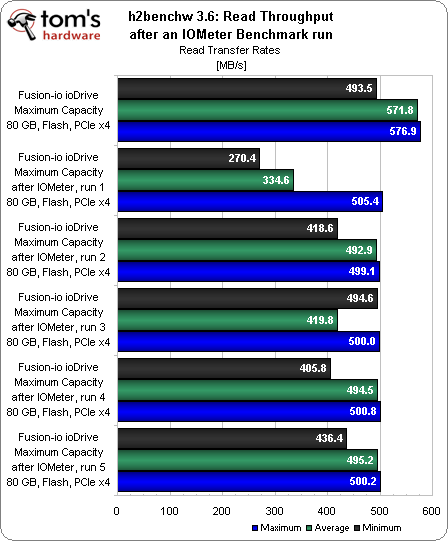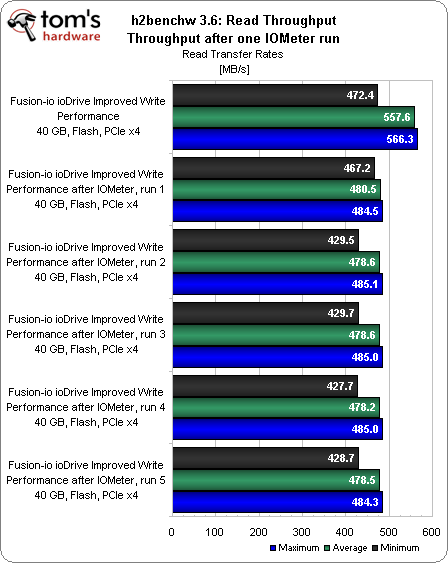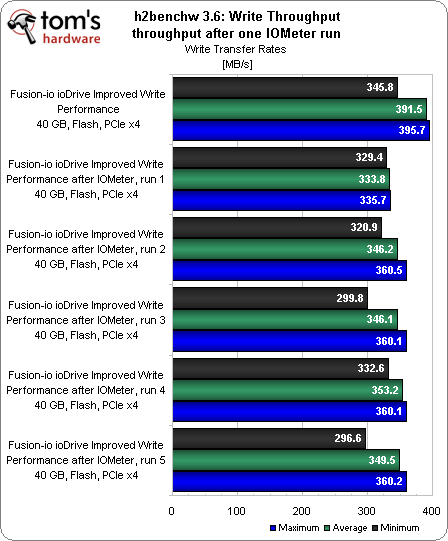Can The Flash-Based ioDrive Redefine Storage Performance?
Throughput After I/O
As already mentioned, we also looked at throughput after having executed an entire IOMeter run using all four benchmark patterns. We ran the h2benchw sequential read/write test five times to see if, and how, the throughput would return to maximum levels.
Full Capacity (80 GB)
Running I/O-intensive workloads has a direct impact on sequential throughput: the first h2bench2 test run returned half the minimum and average throughput, and decreased maximum sequential throughput. The numbers recover quickly, but we did not receive maximum performance after only five test runs.
The impact of switching from high I/O workloads to sequential operations is even more noticeable for writes. The ioDrive’s performance almost crashed in the first run, delivering only a 34 MB/s minimum transfer rate and 174 MB/s peak write throughput. The 68 MB/s average is still disappointing. It took three benchmark runs until the device returned to high performance, yet it still did not reach the initial < 400 MB/s write throughput again.
Increased Write Performance Mode (40 GB)
Let’s look at the results achieved in increased write performance mode.
The increased read performance mode, which reduces the total capacity by 50%, does make a difference, as the write throughput doesn’t drop as much as in high capacity mode when requesting high throughput after intensive I/O.
Get Tom's Hardware's best news and in-depth reviews, straight to your inbox.
The results look similar for writes, representing a tremendous improvement over the default high capacity setting.



